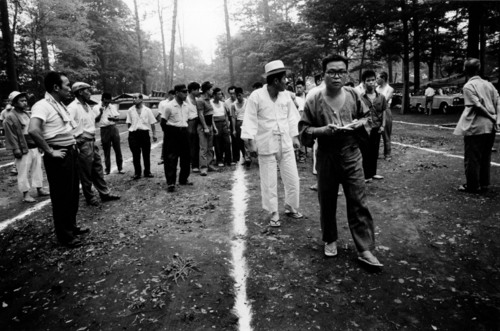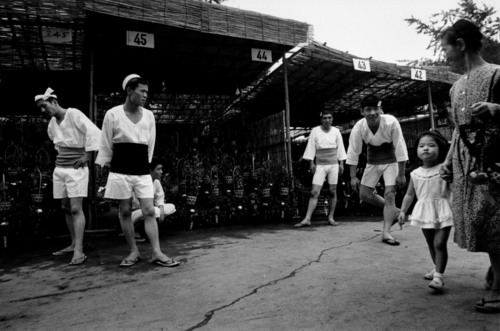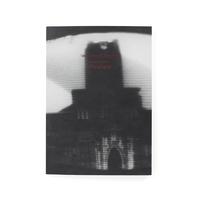Hitomi Watanabe "TEKIYA"
Zen Foto Gallery is pleased to present Hitomi Watanabe's photography exhibition“TEKIYA”from November 18 to December 22, 2017.
Towards the end of 1960s, Watanabe encountered a group of tekiya (street peddlers) marking out spaces on the day before a local festival. While Watanabe was still a photography school student, she followed and photographed them for 4 years since.
After half a century, the series has come back to life - 30 black and white works from this series will be featured in the exhibition, followed by a publication under the same title by Jiyusha.
When I was still a photography student, I was planning to take pictures of a local festival called "Ofujisan" at Jujo, which was going to be held on July 1st, corresponding to the day climbing season for Mt. Fuji begins. I visited the area the day before the festival, hoping to do some location scouting. That was when I encountered this crowd of disquieted people about 100 meters away from the local shopping street. They were some rough-and-tumble men, filled with fervor, wackiness and laziness. I rushed back to my place to grab my camera and immersed myself in taking pictures of those people as soon as I returned. After 10 minutes or so, I was surrounded by those men. A middle-aged lady yelled at me too, saying "if you take pictures you will be beaten half to death!" While I was expecting an immediate punch from somebody, this man who seemed to be a boss among the group came up close with his overwhelming body odor and told me to take photos of him. He was like a godsend to me. This is how I started my career as a tekiya street photographer.
Festivals are never perfect without street stalls - Smell of acetylene gas, goldfish scooping stalls and cotton candy stalls are things I would recall. Street merchants always sell cheap food and stuff with their compelling sales pitch in their 3 feet or 6 feet sized stalls, although many have improved their quality nowadays. We call these people tekiya, yashi, or hosuishi. They don't have any fixed stores but travel around Japan to join local festivals and special events. Recently, their sales have apparently been decreasing as department stores and supermarkets chains organize events inside and outside the stores to attract customers during the festive days. If you pay enough attention, though, you can still find them even at festivals in Tokyo. There are two types of markets - hirabi (normal day market) and takamachi (high day market). They sell on a fixed day of each month for hirabi and for takamachi, they sell mainly at shrines and temples during festivals. "We are simply merchants", they always say with pride.
ーHitomi Watanabe
-
 Hitomi Watanabe "TEKIYA", Jujo Fuji Jinja Shrine, late 60s © Hitomi Watanabe
Hitomi Watanabe "TEKIYA", Jujo Fuji Jinja Shrine, late 60s © Hitomi Watanabe -
 Hitomi Watanabe "TEKIYA", Sensoji Temple, late 60s © Hitomi Watanabe
Hitomi Watanabe "TEKIYA", Sensoji Temple, late 60s © Hitomi Watanabe -
 Hitomi Watanabe "TEKIYA", Sensoji Temple, late 60s © Hitomi Watanabe
Hitomi Watanabe "TEKIYA", Sensoji Temple, late 60s © Hitomi Watanabe

